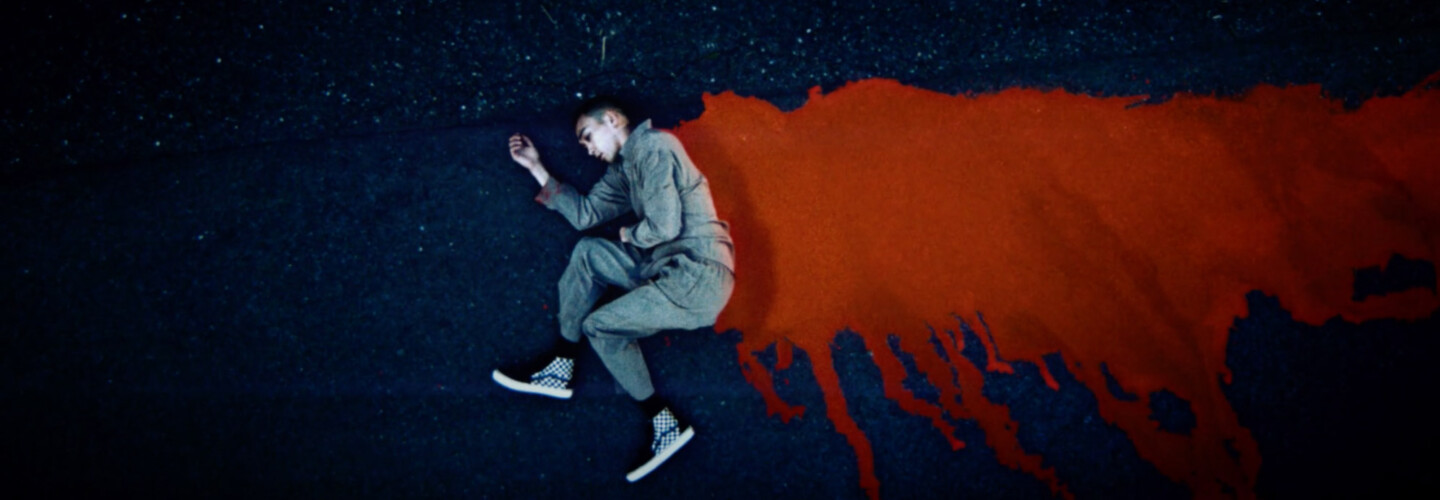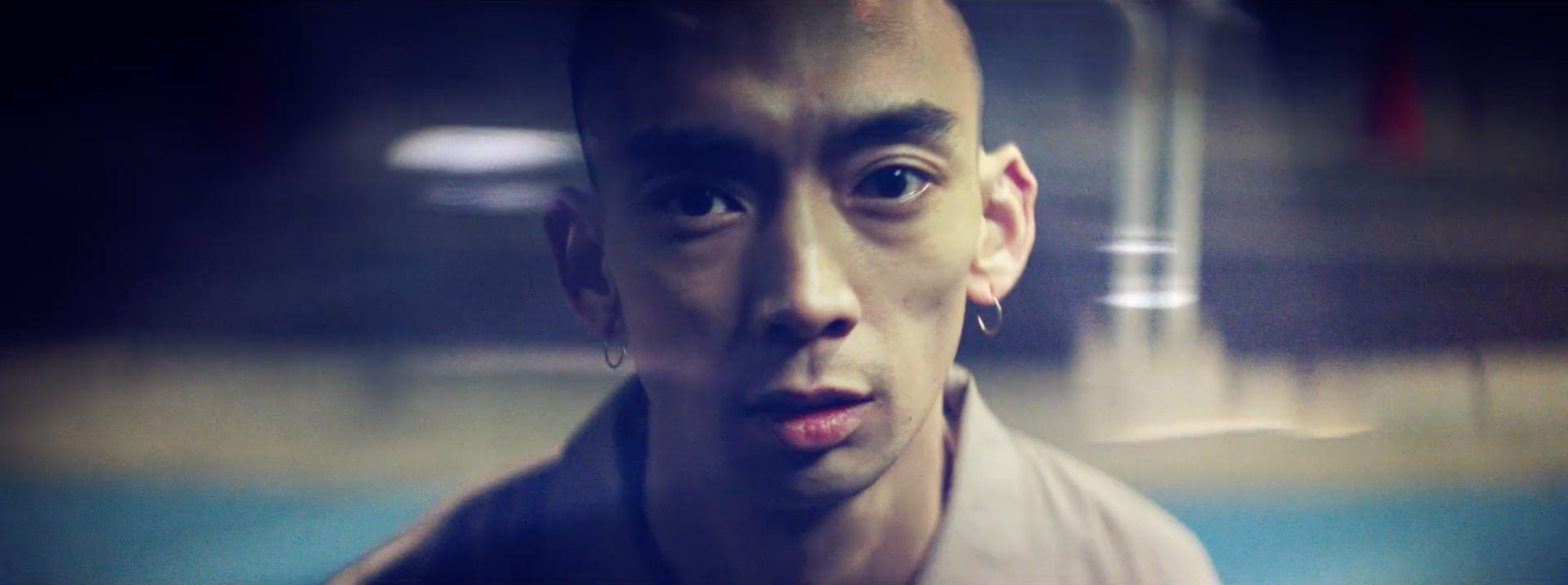
Depicting a dead-end between Japanese tradition and western culture, Tokyo based Director TAKCOM and hip-hop beat artist Ramza combine forces for a stylised pursuit through suburban dread in Pessim. In our interview, TAKCOM explains the universal significance of this unsettling symbolic journey into the past of a lonely man teetering on the edge of life.
As an artist you seem to consistently lean towards more experimental projects. Is this a tendency you find yourself having to suppress when commissioned for more client-oriented work?
Exactly, my tendencies become suppressed for more client-oriented work most of all. Because I’ve never thought about the task of more client-oriented work as being to just give them some solutions. I keep myself trying to enjoy it under the given conditions but it is sometimes very hard for me as I just naturally do what I want to do. As a result, it looks ‘experimental’. Now, I think I should go one step further. I need to spend more time doing what I want to do. I hope these tendencies become the solution for a client in the near future.
What prompted this ambitiously surreal collaboration with Ramza?
I was already familiar with his sound through some of his productions for rappers but had never had a chance to see any of his club gigs because he’s based in Nagoya which is a little bit too far from Tokyo. The first time I unexpectedly experienced his solo performance without lyrics from a rapper I was just blown away. And so I rushed to suggest that we make something together. From there, I thought it would be very interesting to make a short film without words with his sound.

The Pessim website makes reference to the suburbias depicted in films such as La Haine, Gummo and Gomorra. What elements did you draw from these films when developing the suburban aesthetic of Pessim?
It was unintentionally connected with these works once the film was complete as I was not trying to refer to them in the beginning.
It is very hard for young people to keep their minds strong in the Japanese suburban culture. It’s full of phoney broken tradition. Their western culture is also not true. I feel like that is empty. There is nothing to identify themselves as special. Some of them struggle to escape from this but most people somehow accept it or lose their minds and life goes on. I can find such things in the areas Ramza and I were born and live.
How did these philosophical intentions translate into your location and equipment choices?
This location is the kind of street we can see everywhere in Japan. I wanted to keep the visuals mythical and feeling like a nightmare, that’s why we shot it in such anonymous place. The film was shot on an Arri Alexa Mini, with DoP Makoto Tajima using old lenses which are usually used for a projector which helped to express the unique visuals we wanted. For example, the colorful lens flare we see in this film were made by real lighting. In post production, we added some weird and ghostly smoke effects for the Fox figure, but we didn’t want to do too much in order to maintain a realistic feeling.
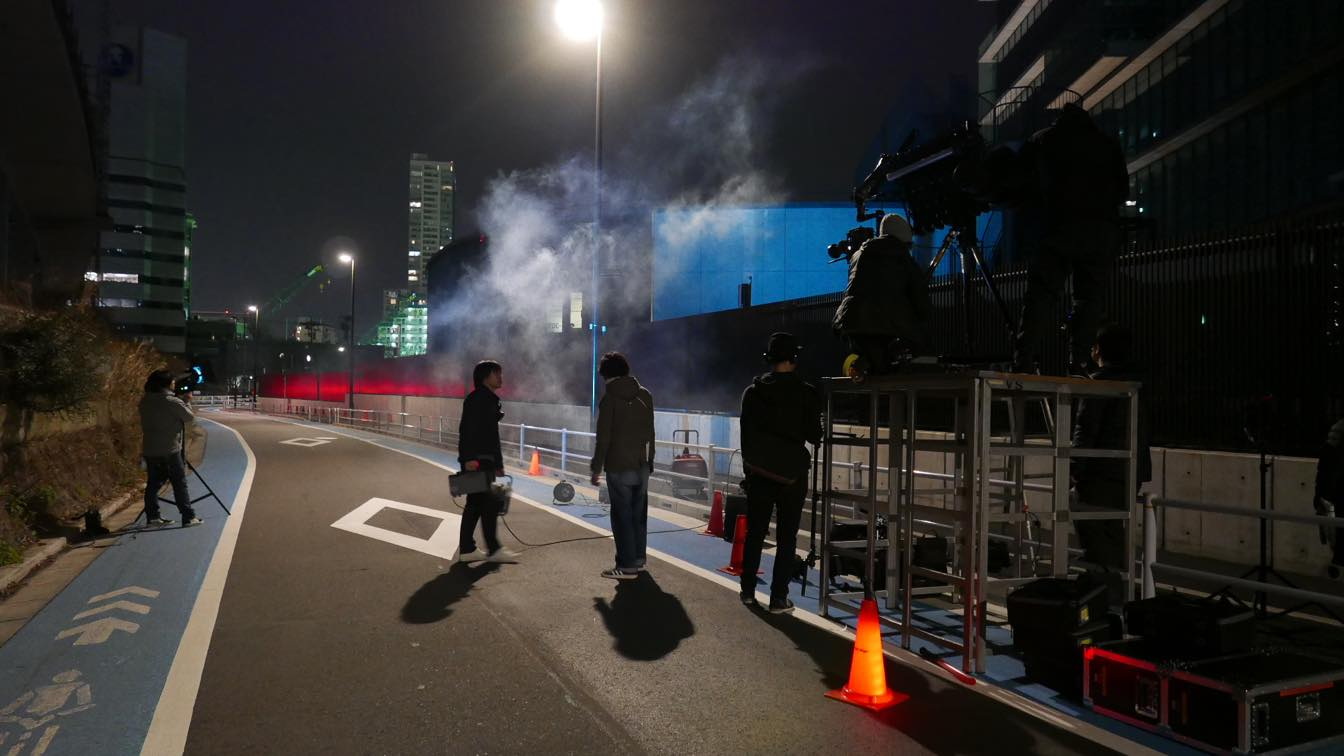
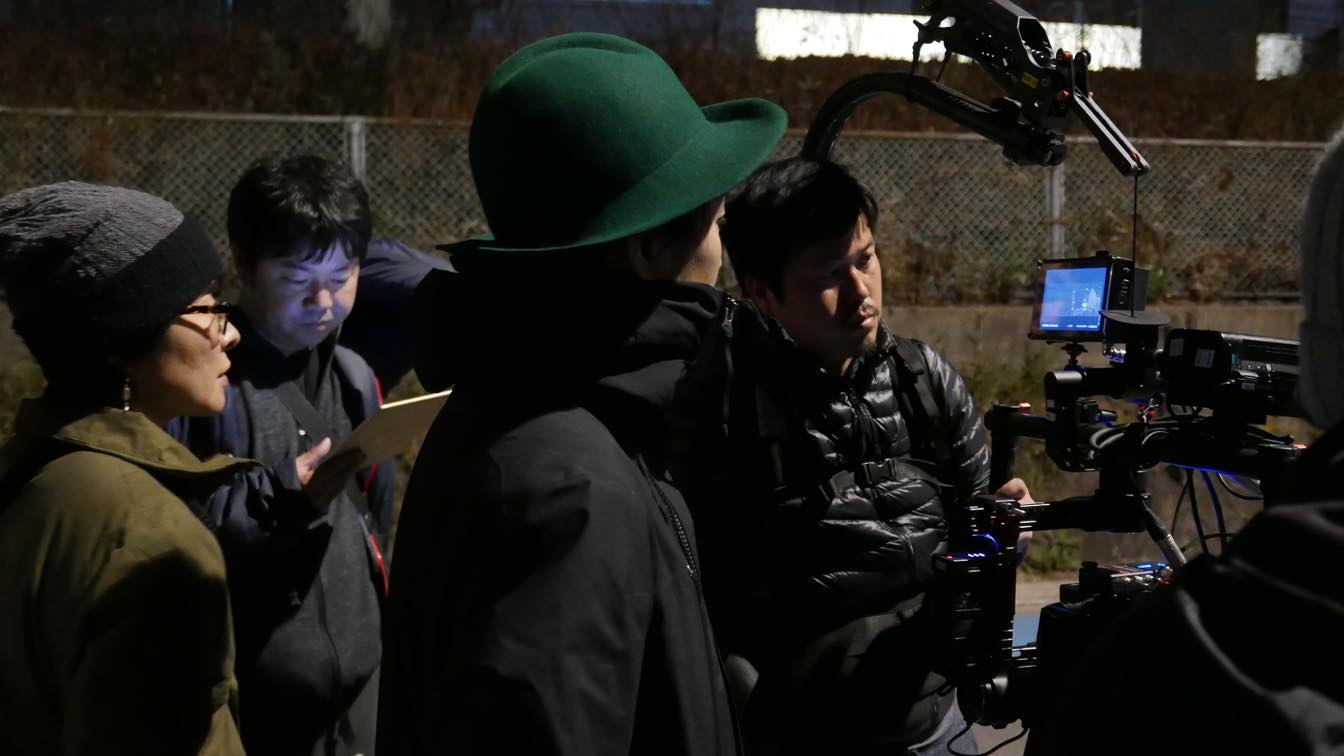

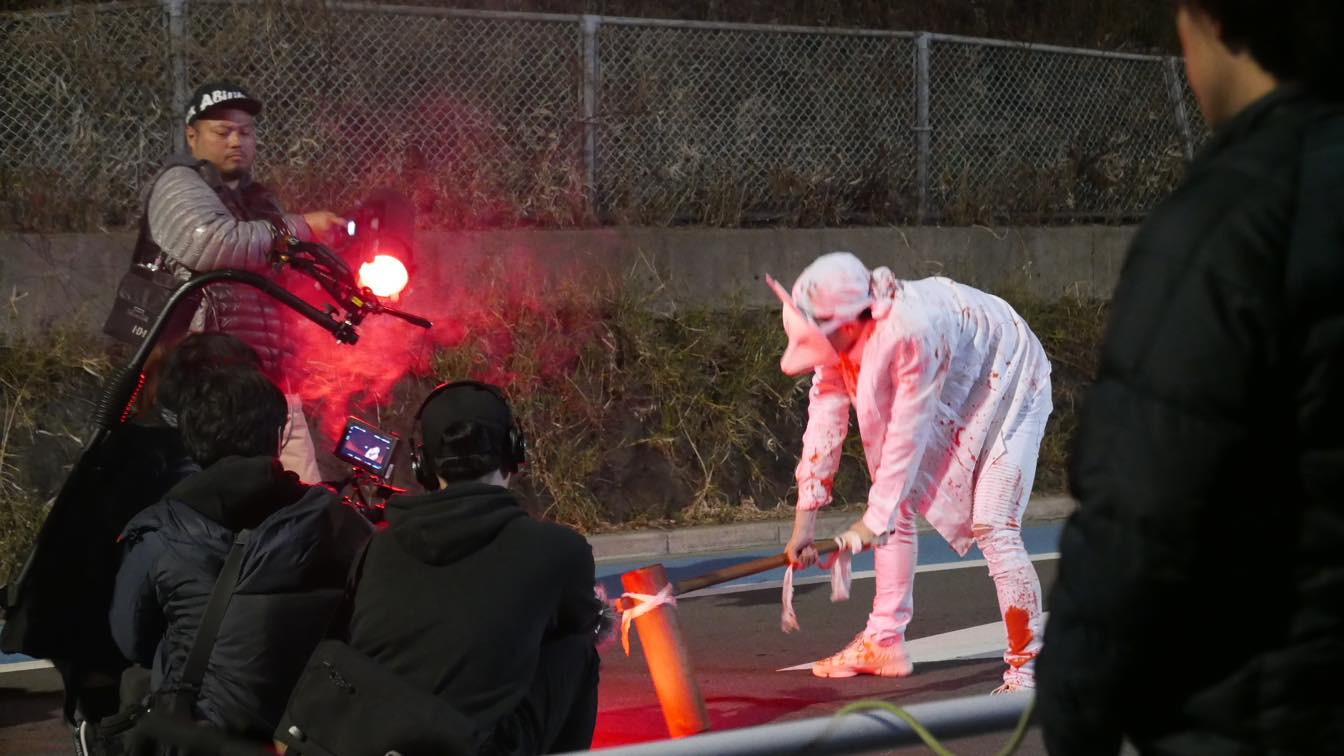
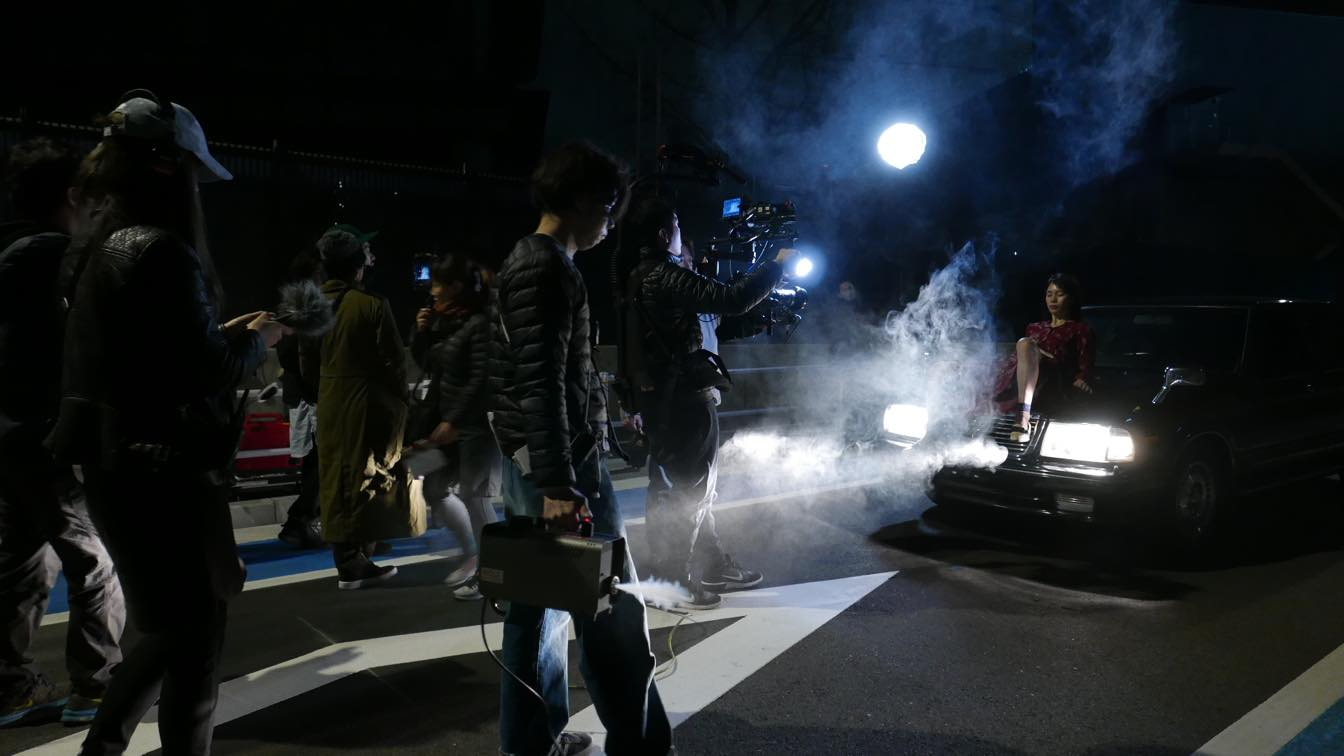
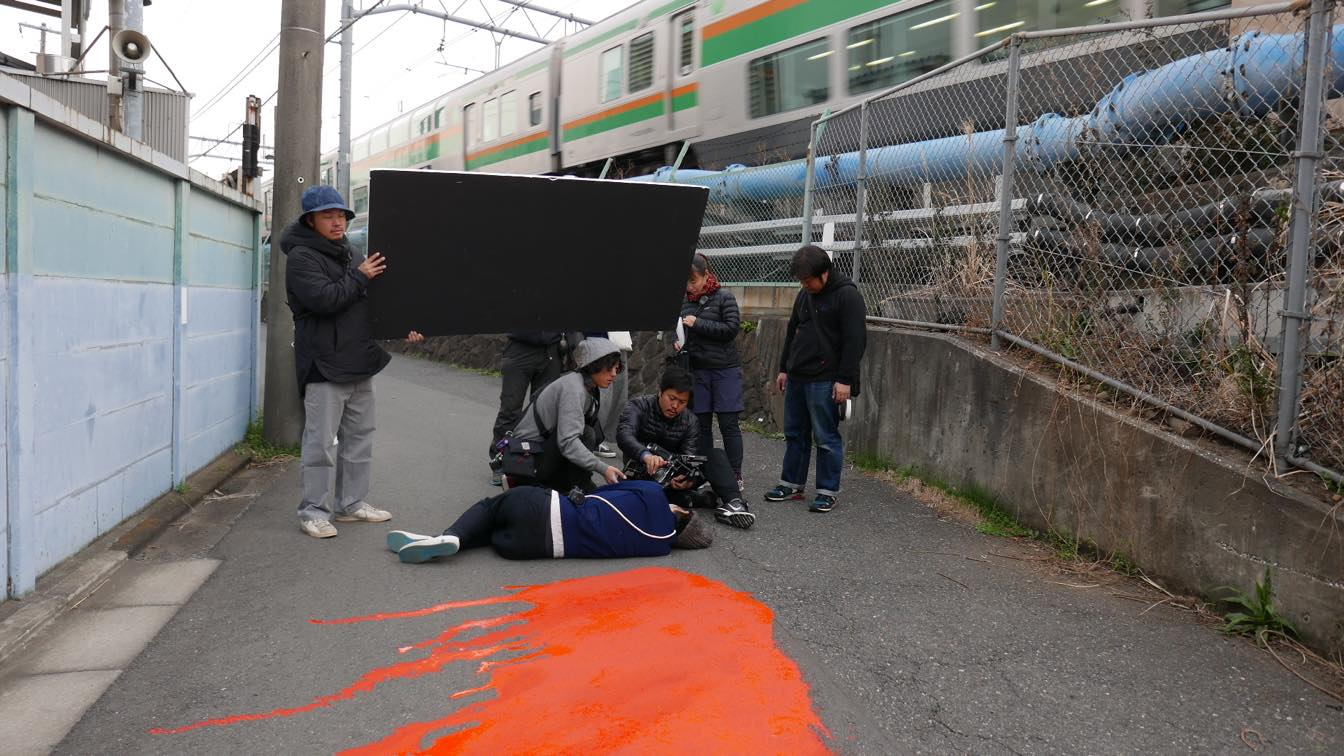
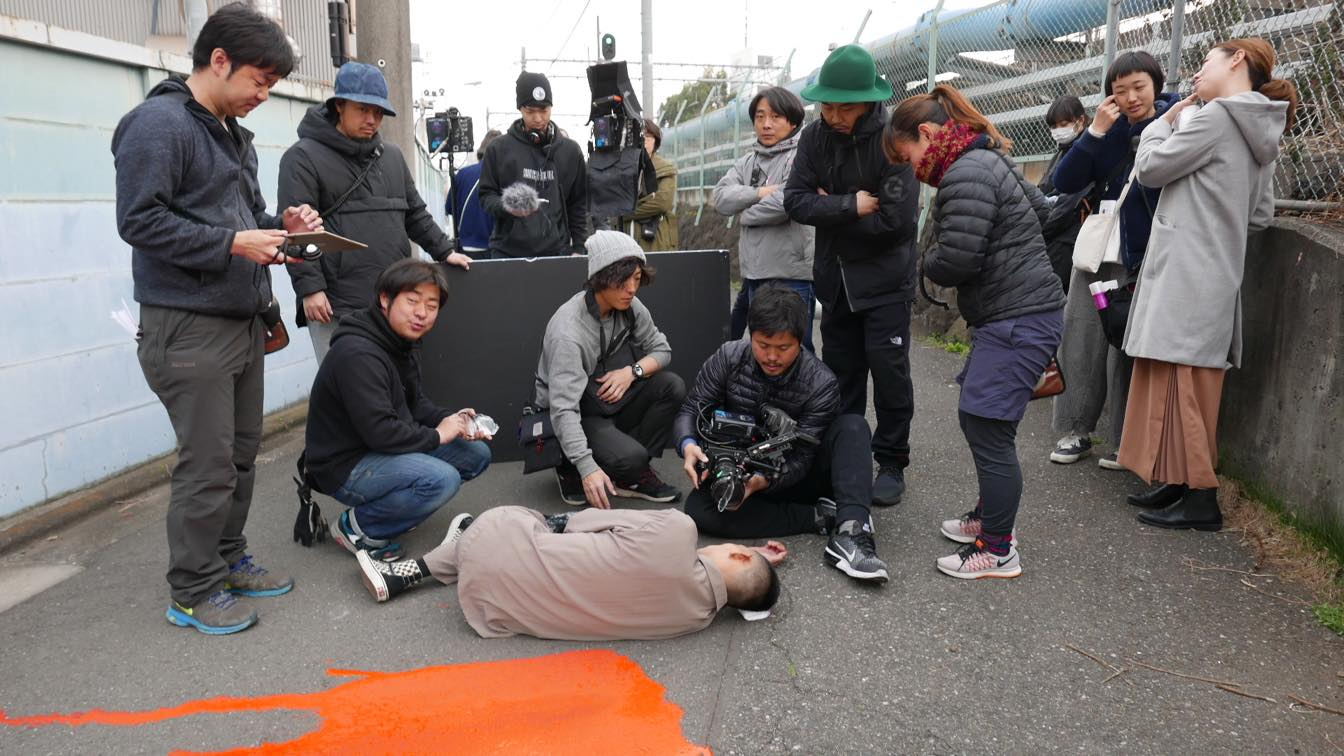
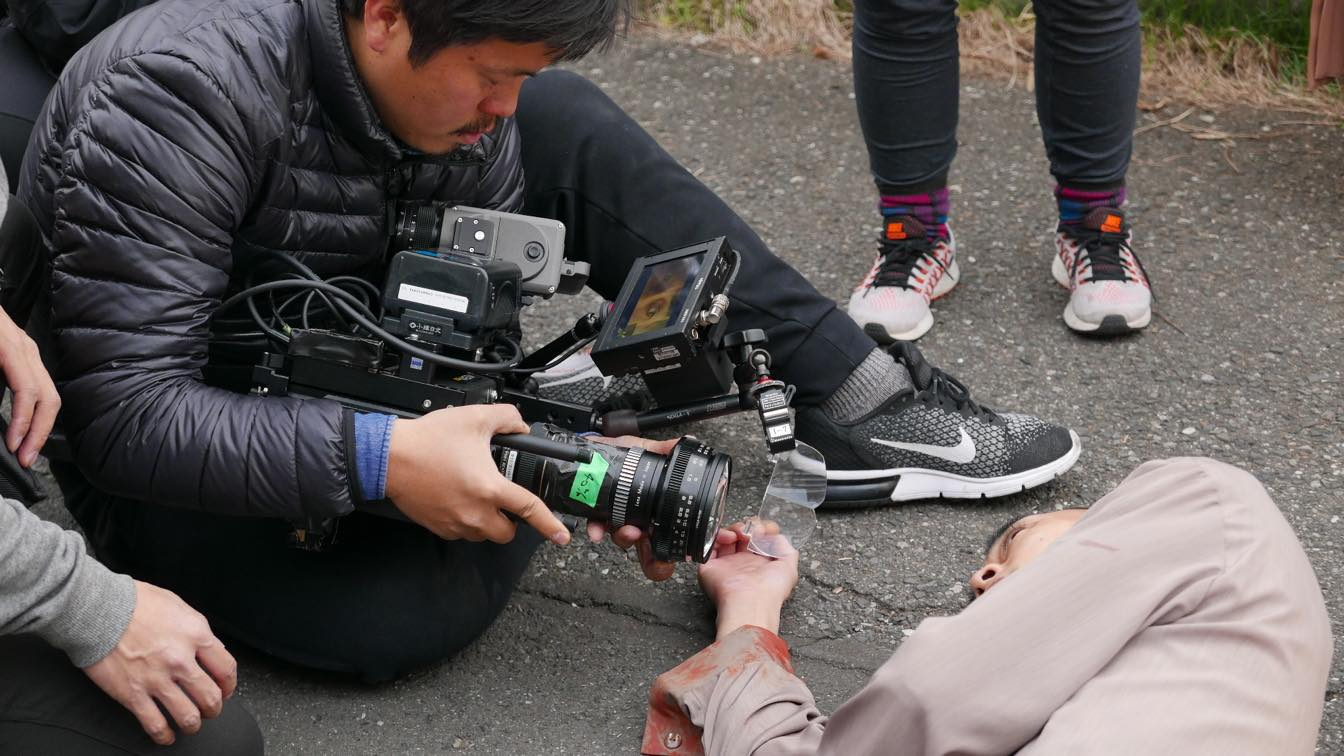
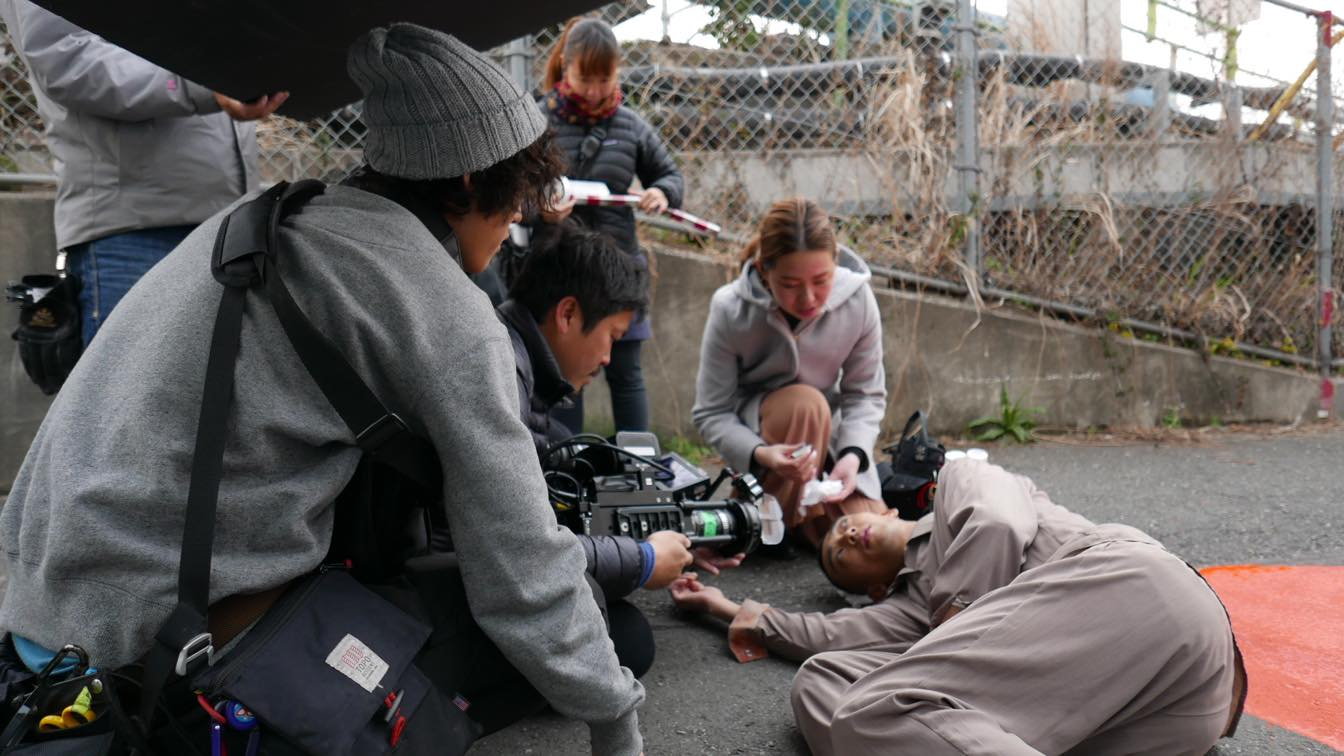
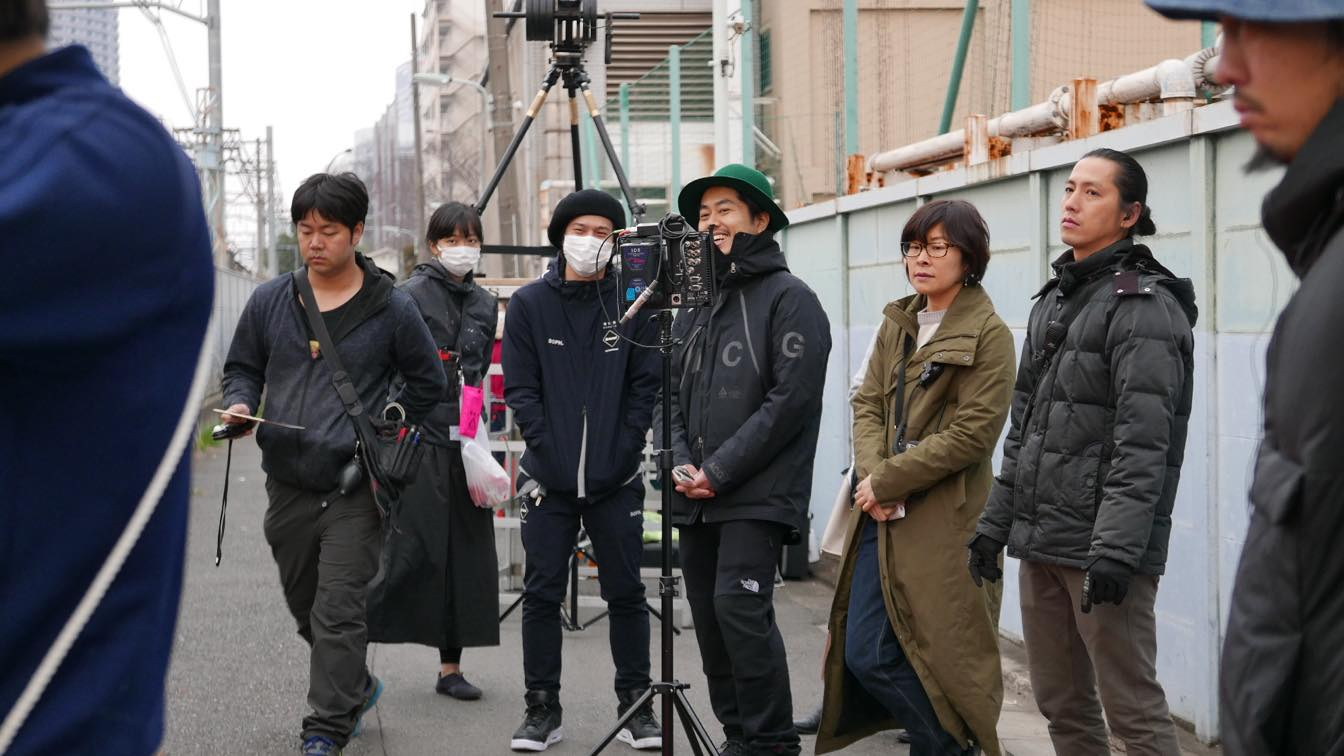
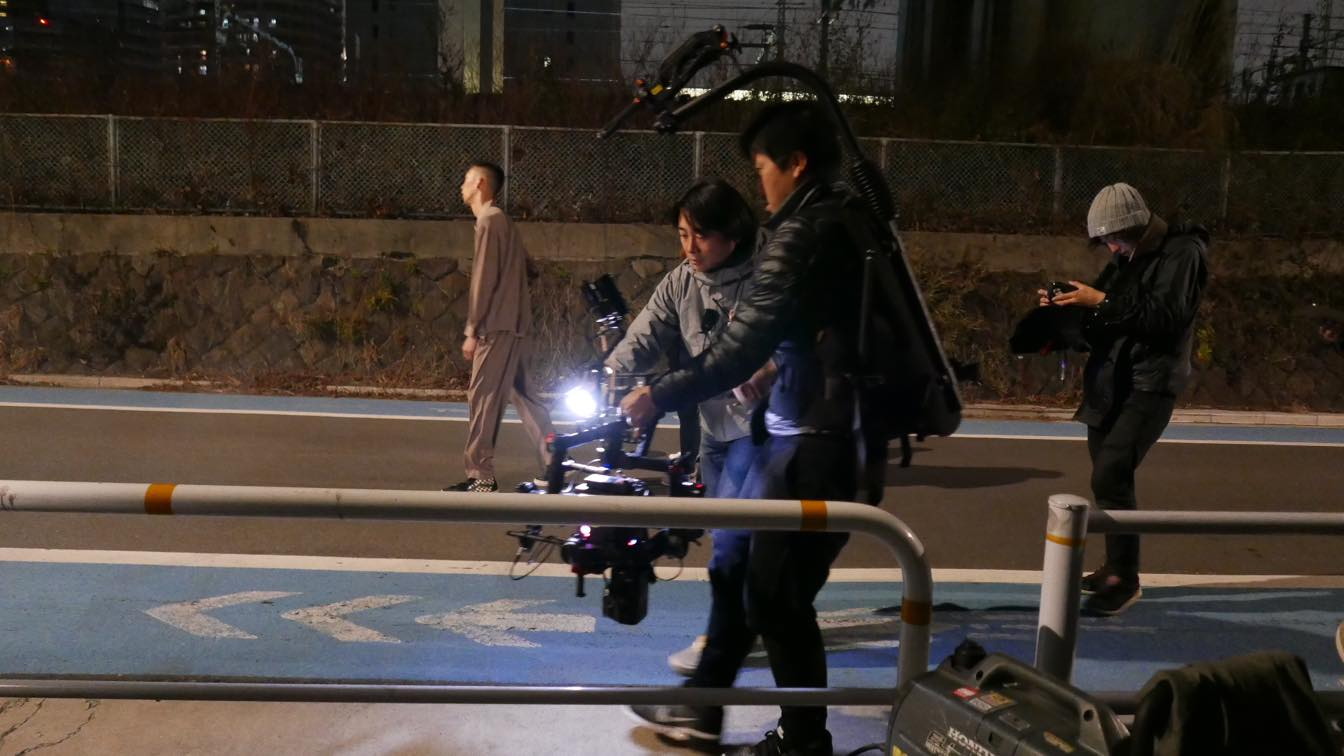
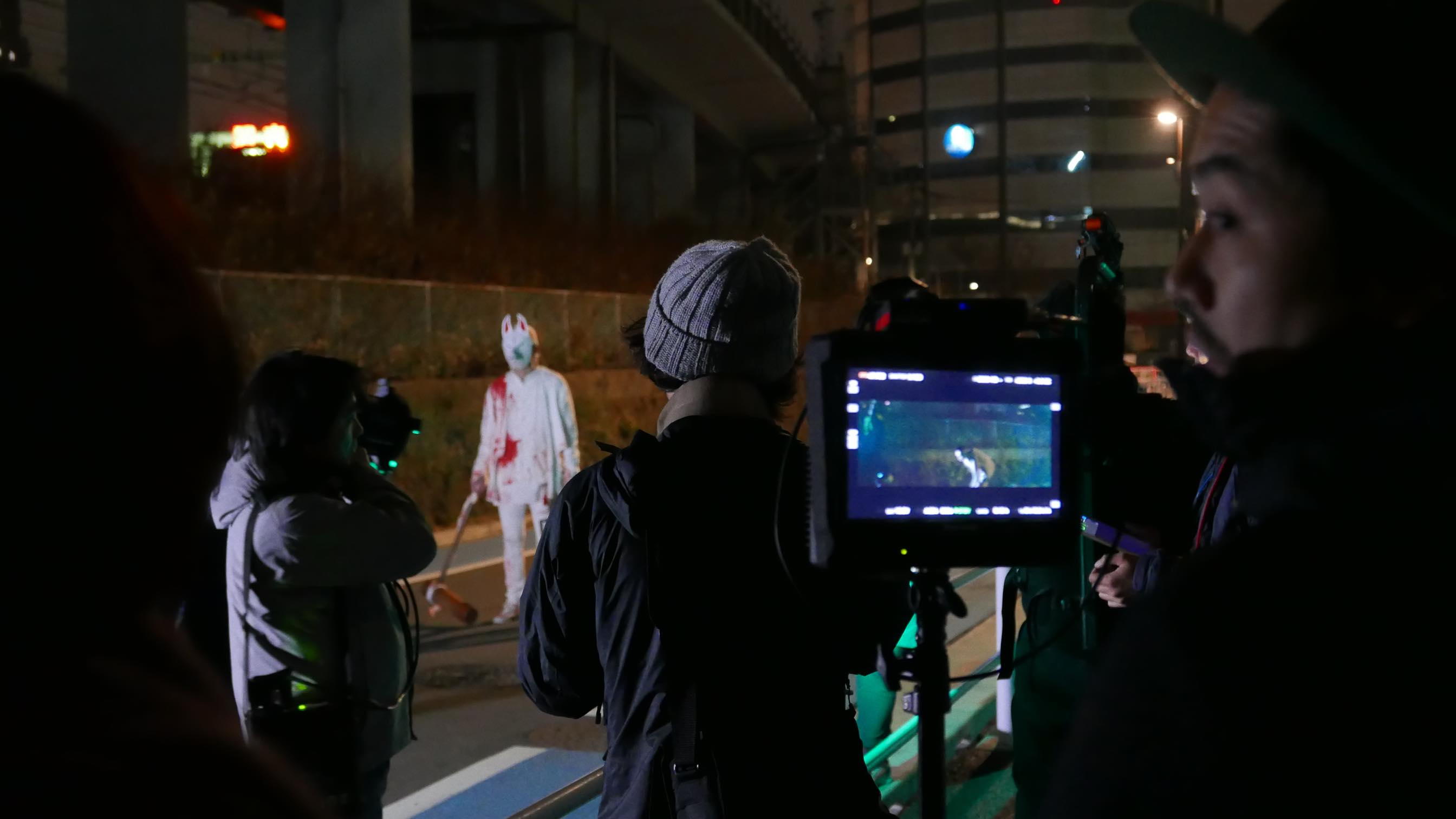
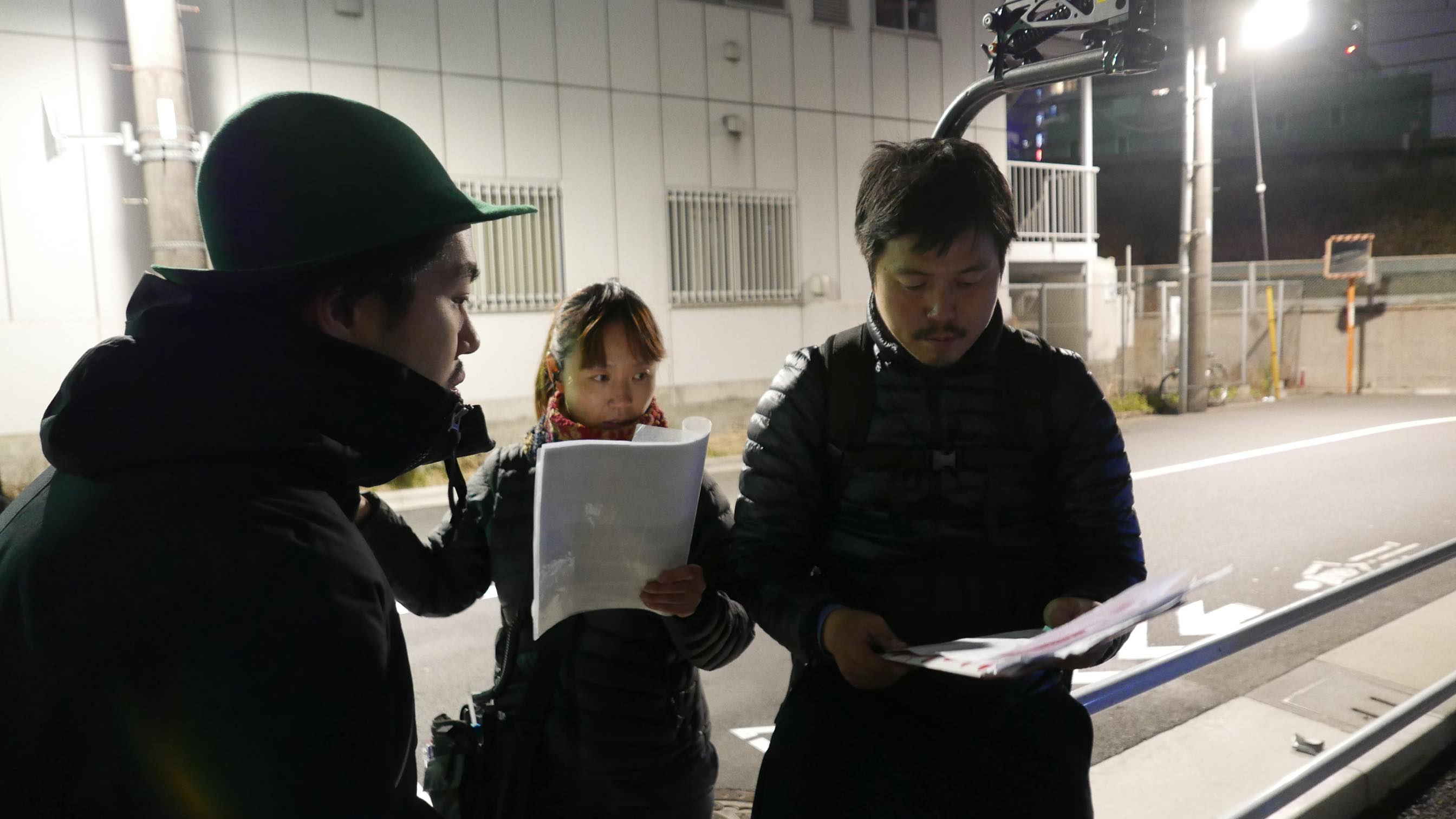
I had a wonderfully passionate crew who I enjoyed working with on this project. I think everyone who was involved also suppresses their tendencies in more client-oriented work. Also, as we had thought things through at the beginning and carried out our plan, there were no particular problems during production.
As he stumbles along this final road Mr.P encounters several characters along the way. What do they represent in his and our collective unconscious?
The character who wears the fox mask (Kitsune) represents a death and Japanese tradition. Foxes are a common subject of Japanese tradition. The blunt instrument carried by that figure is called a ‘Kine’, it is a Japanese traditional wooden mallet.
It is very hard for young people to keep their mind strong in the Japanese suburban culture. It’s full of phoney broken tradition. Their western culture is also not true.
I wanted to depict changes in the values of freedom. It’s like our mother, friends or those who have been hanging around us locally, etc. They help and care about him and they feel sad about his death, but at the same time, they are the very typical people who tie him down. Their relationships represent restrictions in life. That’s why sometimes Mr.P blames them. At the end, Mr.P accepts that he can’t escape from this and he finds comfort.
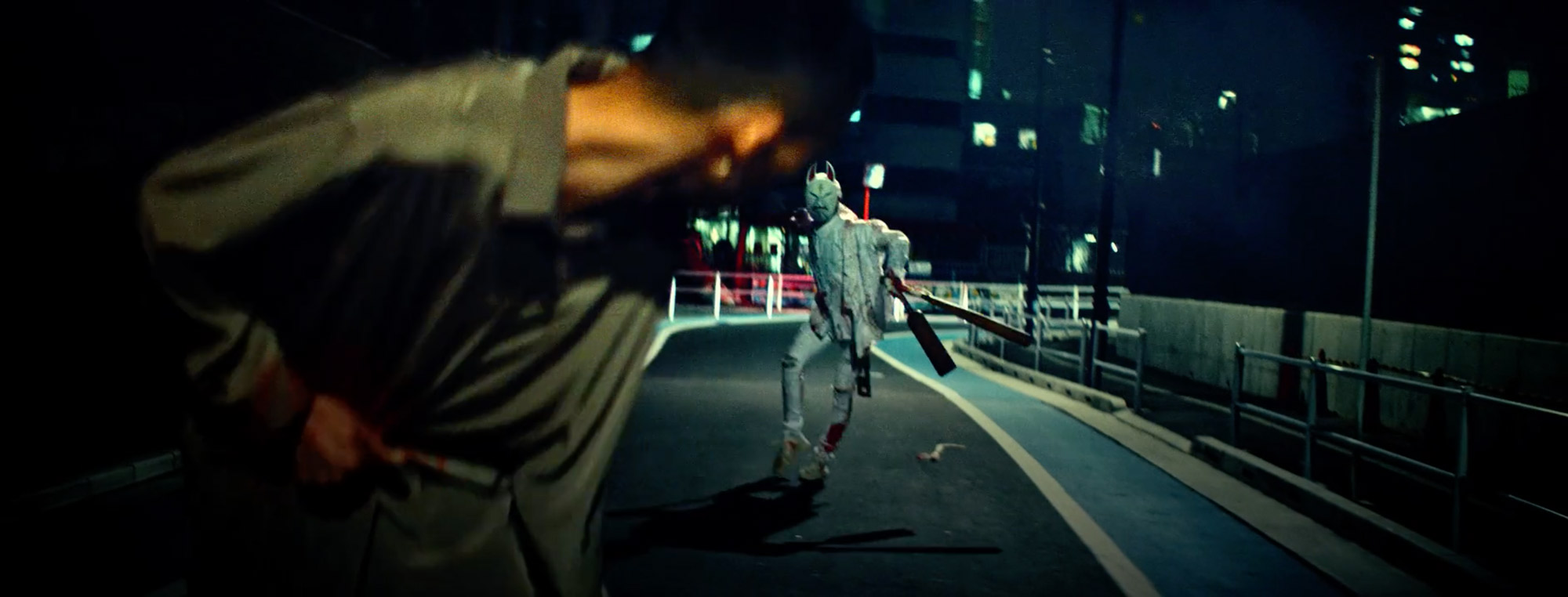
Kyohei Mitsune’s shambling attempt at escape, coupled with the twitchy pursuit of Shimpei Nemoto’s bloody Kitsune permeates Pessim with a feeling of dread. How were those performances developed alongside Yohei Suzuki’s choreography?
I wanted to create a strange mood of death. I had cast Kyohei for another piece of work before so I knew he would be good at expressing himself as someone who was sick. Sometimes he looks like skin and bones for me. That movement reminds me a skeleton dancing. I asked Shinpei that the “Kitsune looks like human beings, but makes strange movements that human beings do not usually do”.
In the dancing scene with several people, I asked Yohei to choreograph it like “A western street dance which becomes Bon-Odori without realizing”. Bon-odori is the Japanese dancing festival celebrated to honor the spirits of their ancestors. Sometimes we said they should move like dead people are dancing with us in Bon-odori.
The film’s soundtrack provides an excerpted tour through Ramza’s album of the same name. How did you select the track snippets and in what way did they, in turn, inform the film’s structure?
At first, I wrote down my inspiration while freely listening to the rough mix of Ramza’s album. After that, I put the script and edited the tracks in Adobe Premiere. I could get the pace of film from that. I shared it with Ramza. After shooting, we had a lot of discussions about which tracks we should use. It was a back and forth between me and Ramza. For example, I’d send the offline to Ramza and then he’d adjust the soundtrack, I’d listen to it and adjust the edit again. We were looking for a good pace between sound and visuals.
Has there been a different reaction to the film between western and eastern audiences?
I haven’t got any different reactions so far. I’m curious about people overseas who have an interest in this film from a cultural viewpoint. But, I hope that everyone who watches it feels the same emotions, even if they have different cultures.
What will we see from you next?
Next will be coming a film with dialogue and I would like to make some feature films.

